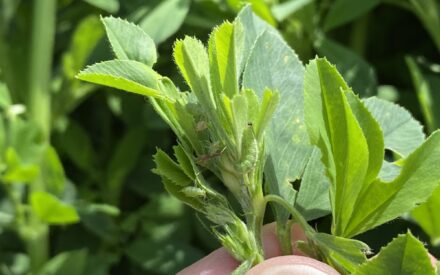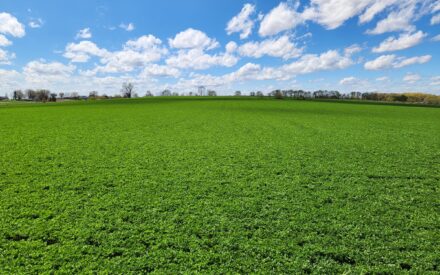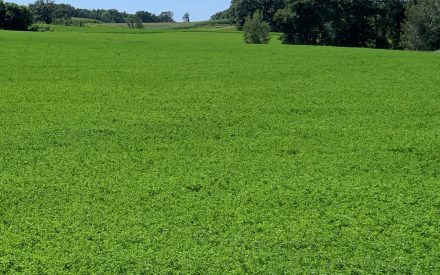Objectives of the Wisconsin Alfalfa Yield and Persistence (WAYP) Program
The Wisconsin Alfalfa Yield and Persistence Program is designed to provide forage growers, agricultural professionals, researchers, and the forage industry with a unique look at what is happening at the farm level. As more fields are entered and years pass, the reliability of information continues to increase. Environmental conditions have had a profound influence on both yield and quality with some years being similar, but no two years are exactly alike.
The Wisconsin Alfalfa Yield and Persistence Program (WAYP) aims:
- To verify the yield and quality of alfalfa harvested from production fields over the life of the stand beginning with the first production year (year after seeding).
- To quantify decreases in stand productivity of alfalfa fields as they age.
- To provide an objective dataset to other researchers seeking to answer questions about alfalfa growth, yield, and quality
2024 Overview of WAYP
This summary has now reached eighteen years of project data. UW-Madison Division of Extension educators were asked to identify forage producers willing to weigh and sample forage from 2023-seeded alfalfa fields and continue to do so for the life of the stand. Five new fields were enrolled in the program in 2024 and 11 fields continued from previous years. The current summary includes data for the first, second, third, and fourth production years from fields entered in the program from 2021 through 2024 (2020-2023 seeding). Five fourth-year stands remained in the project, which is fortunate because they are valuable for obtaining long-term data. The fourth production year had only been measured 18 times before this year.
As is always the case in these types of studies, there is some attrition of fields over time. This is either because the farmer decided to terminate the field because of winterkill, declining productivity, or critical yield or forage quality data for a cutting or multiple cuttings could not be obtained. This year there were six fields dropped from the project that participated in 2023. All were older stands that were seeded in 2019 or 2020. Production data was collected from 16 fields in 2024 with a total of 5,474 dry matter tons of forage harvested, weighed, and sampled from 1,107 acres.
Over 18 years, data was collected from 138 fields with a total of 83,590 dry matter tons of forage harvested, weighed, and sampled from 8,536 acres. Background information of all project fields (current and past) is presented in Table 1. No fields had a fall cut taken in 2024. Fall cuts from 30 fields taken after October 1 are separated from Cuts 1-5 when yield or quality is shown by cut. Generally, the fall cut has a lower yield and higher quality, and this has the possibility of skewing averages as it had been previously included with Cut 4 or Cut 5.
2024 Program Summary
Growers in 2024 experienced an overall record yield, with individual cut yields varying based on weather. Early cut yield was excellent, but quality was poor as producers struggled with delayed harvest and muddy fields. Later cuts had excellent quality, but normal yields. It is important to characterize these differences to know what has happened in the past and to plan for future years.
Download and read the full report below.
Acknowledgements
First and foremost, UW–Madison Extension wishes to thank the producers who took the extra time and effort to obtain weights and forage samples for the project fields at each cutting.
2024 UW Coordinators: Mike Bertram, Aerica Bjurstrom, Liz Gartman, Kevin Jarek, Scott Reuss
Funding for this project was provided by the Midwest Forage Association (MFA) and UW–Madison Extension.
This report was written and data compiled by Mike Bertram, superintendent, UW Arlington Agricultural Research Station. Questions may be directed to mbertram@wisc.edu. Reports from 2007-2014 were written by Mike Rankin, emeritus crops and soils agent, Fond du Lac County Extension.

 ▶ Forage Insect Pest Update
▶ Forage Insect Pest Update ▶ Determining the Value of Standing Forage
▶ Determining the Value of Standing Forage First crop insect scouting in alfalfa
First crop insect scouting in alfalfa


